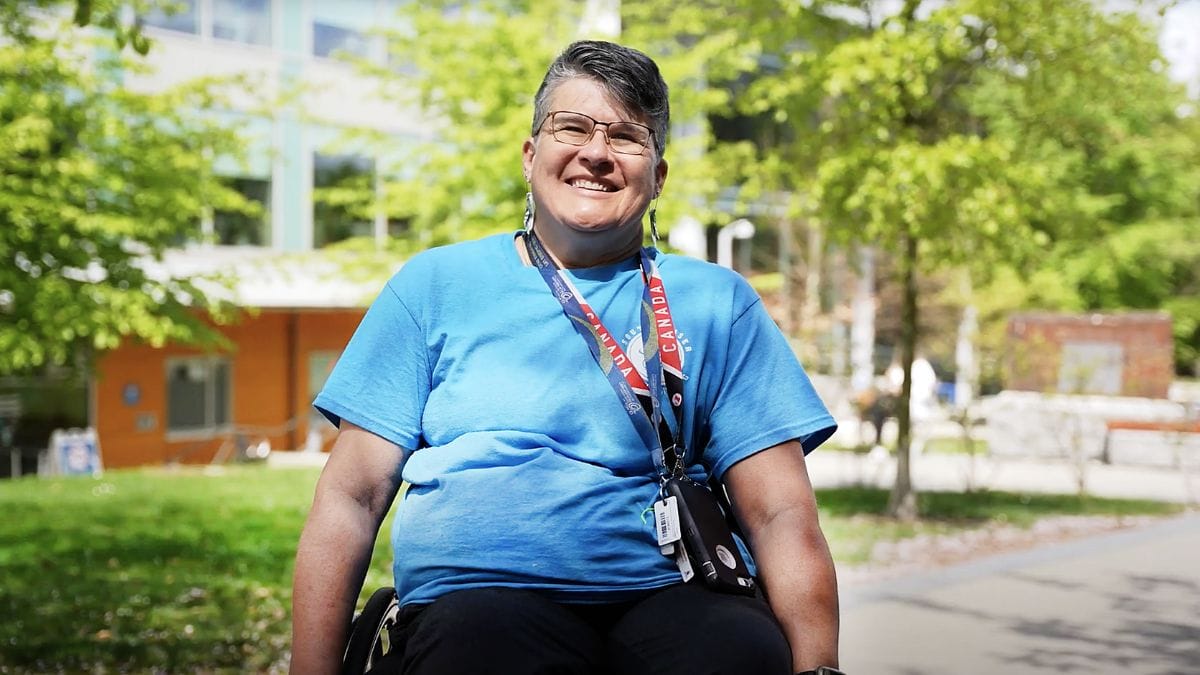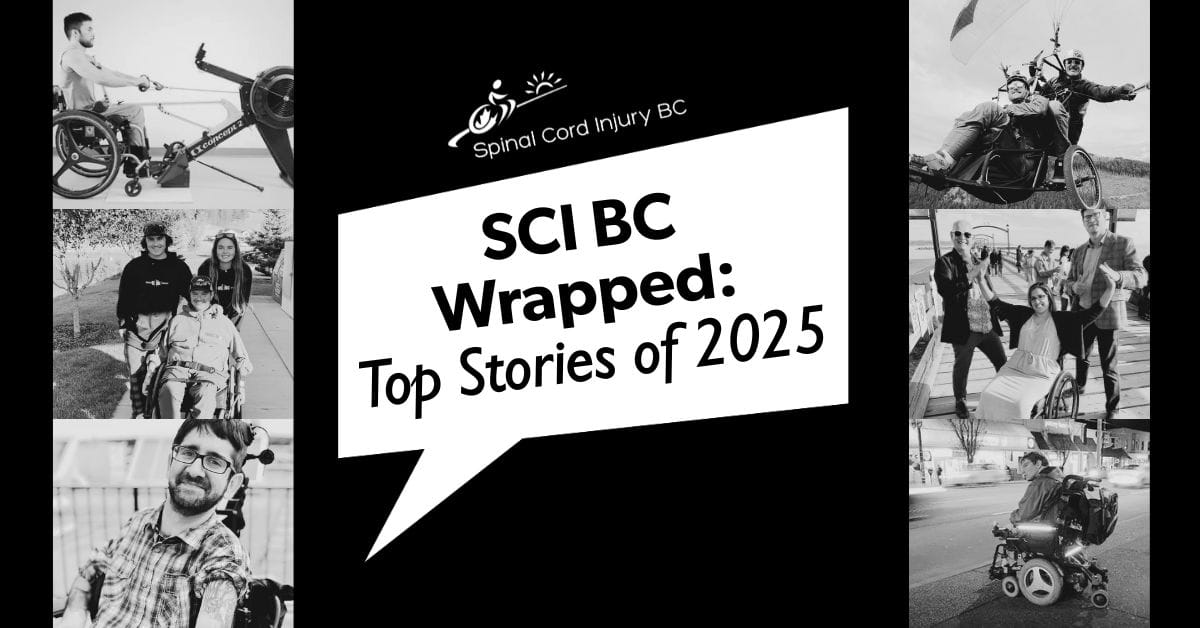
Arm and shoulder injuries are one thing for able-bodied people, who can immobilize and rest an arm during the healing process without compromising their ability to get around. But these types of injuries are an entirely different animal for manual wheelchair users. Completely resting an injured arm or shoulder in a sling or cast means almost a complete loss of mobility and independence—no wheeling, no ability to transfer. And failing to allow these types of injuries to heal completely often leads to chronic, life-long problems. Even if they do heal, they’re not likely to heal the right way, so mobility can be forever compromised. (Younger readers take note: you’re not immune. You might believe your youth and resilience make you invincible, but be warned that you have countless older Peers living with chronic injuries who once thought the same way you do.)
Could one answer be a brace or orthotic device? SCI BC Peer and Kelowna-based optometrist Dr. Paul Clark is a believer.
SOMETHING NEW
“My story is one of a partial triceps tear in the right arm which required full rest for six weeks that I never gave it,” says Clark. “In the beginning, I did what I did when I was younger and simply exercised it. Not surprisingly, there was no improvement, so I just put up with it being weak. It affected my transfers, and even my ability to push doors open with the right arm. Worst of all, it destroyed my basketball shot. I couldn’t even shoot the ball high enough to get it in the hoop if I was right under it!”
After a year of pain, Clark admitted defeat and approached his family physician with the problem. He was referred to Allan Blyt, a prosthetist and orthotist with Kelowna’s Hager Orthopaedic Clinic Ltd.
The goal was to explore whether or not an orthotic brace could help.
Blyt confirmed that there was no suitable out-of-the-box brace available, but he was eager to take on the challenge of creating a custom solution unlike anything he’d ever built—an orthotic device that would allow the arm to heal but without completely compromising Clark’s mobility and independence.
“At the initial assessment in my clinic, I heard from Paul how active he was, using his bike as his primary mode of transportation to and from his office daily,” says Blyt. “He explained that the main issue was with transferring in and out of his chair and bike due to the permanent tear in his triceps muscle on his right arm. This did not allow him to maintain a straight elbow when weighted by his body as he attempted to transfer. I knew we could be of assistance because I had dealt with a similar issue across the knee joint of a patient who wanted to stand, but had quadriceps weakness due to illness. The concepts were the same and so it was just a matter of working across the elbow and not the knee.”
“The brace was meant to take the weight off the tendon during transfers at that extreme flexed time,” adds Clark. “It would lock to hold my weight without the tendon needing to be involved. Of course, Allan tried to make it lightweight, which meant I broke it in the first week. So a stronger joint was ordered; one that’s normally used for knee braces. That turned out to be just the ticket.”

Blyt explains that this is often the biggest challenge when creating a new orthosis—finding the right sized mechanical joints and upright bars to support the weight without being too bulky and heavy. But once he had resolved the sizing issue, he was confident that the device would be successful. “We had several follow up appointments to fine-tune the orthosis—to trim the lines of the cuffs, make length changes to the straps, and flare the plastic cuff edges,” says Blyt. “No major issues arose during those visits, so that meant the concept was working.”
Clark wore the brace faithfully, despite never knowing if it would produce any result because he never had pain when it was on. His patience would eventually pay dividends.
THE OUTCOME
“After six weeks of wearing it last summer, I stopped,” says Clark. “The rest had done the trick, and while my arm was weak from lack of use, there was no pain. That allowed me to get back to exercising and strengthening the arm. It’s still not quite where it was prior to injury—at that time, I could do triceps exercises with 20 pounds. I have improved from two to five pounds before resting the injury, to 12 pounds currently. And although my basketball shot is not back to what it once was—and many of my fellow players would say it never was that great—it’s now so much better.”
The result has also been gratifying for Blyt to see.
“It was a real pleasure getting to know and working with Paul,” says Blyt. “It was rewarding to be able to solve his unique and interesting mobility challenge; it’s why I enjoy my career so much!”
He adds that, if you’ve got a similar issue, consider getting a referral to his clinic if you’re in the Okanagan area, or to your local orthotist if you live in another part of the province.
“What we do here at Hager Orthopaedic Clinics is primarily all custom work of this nature,” he says. “We have a fully-equipped onsite fabrication laboratory with the equipment, materials, hand skills and knowledge to provide treatment options for almost any problem presented to us. We believe we can be of assistance to anyone’s mobility issues provided they are willing to work with us and adapt to an orthosis being worn.”
This article originally appeared in the Summer 2020 issue of The Spin. Read more stories from this issue, including:
- The Caregiver Paradox & COVID-19
- Born To Ride: Tara LLanes
- Grasping the Subject: A New Grip-Enhancing Glove
- and more!
Read the full Summer 2020 Issue of The Spin online!




